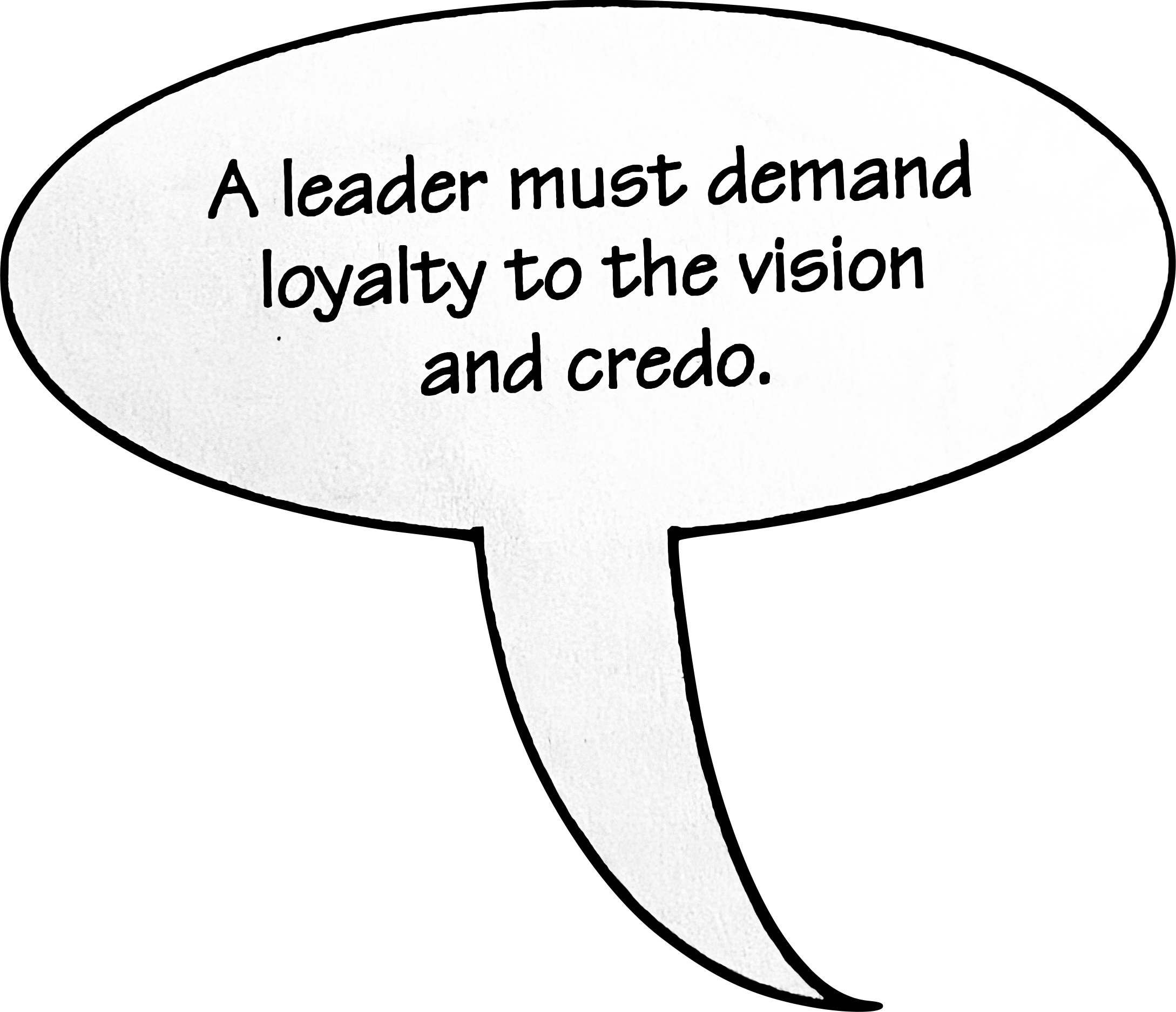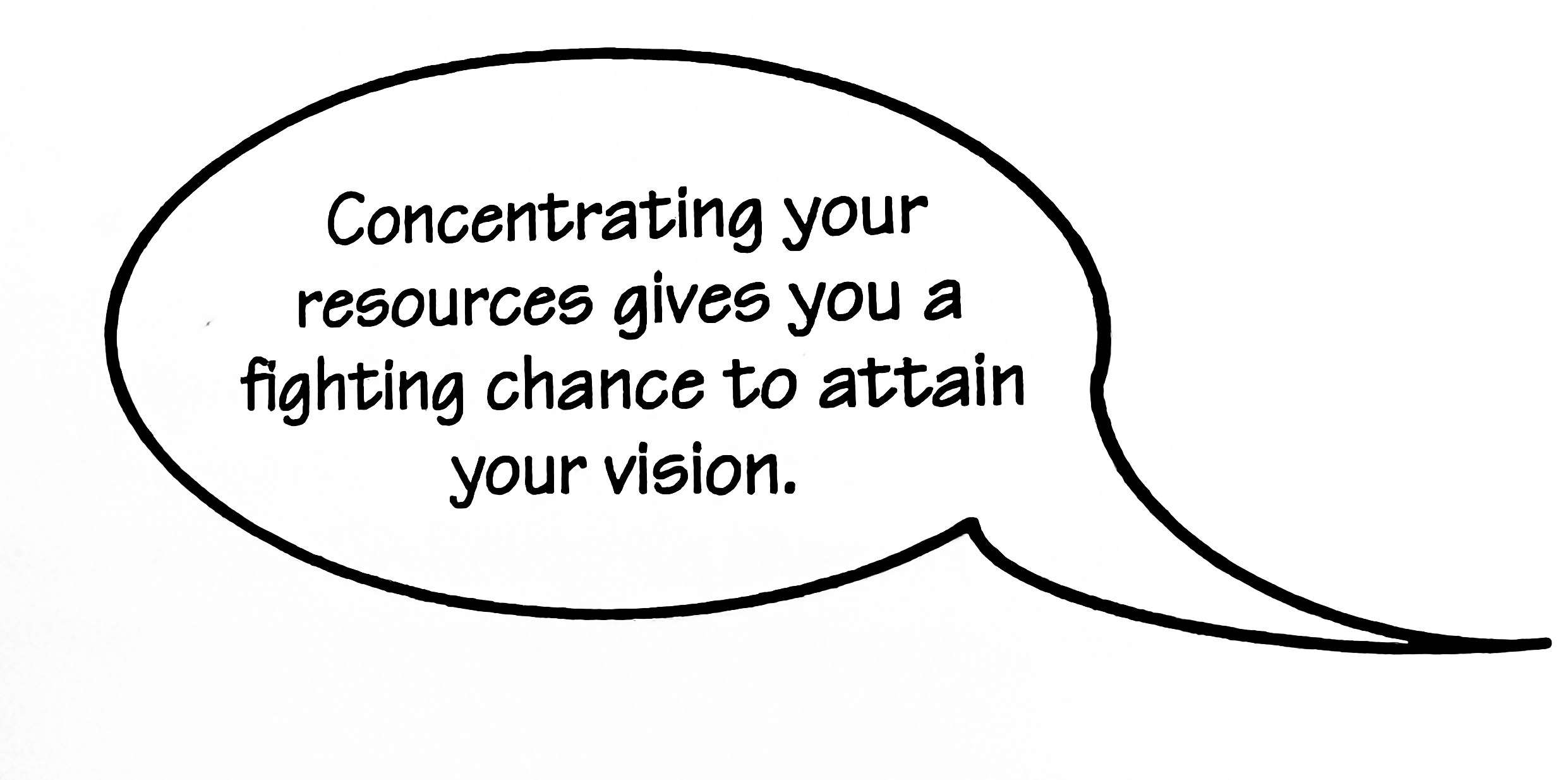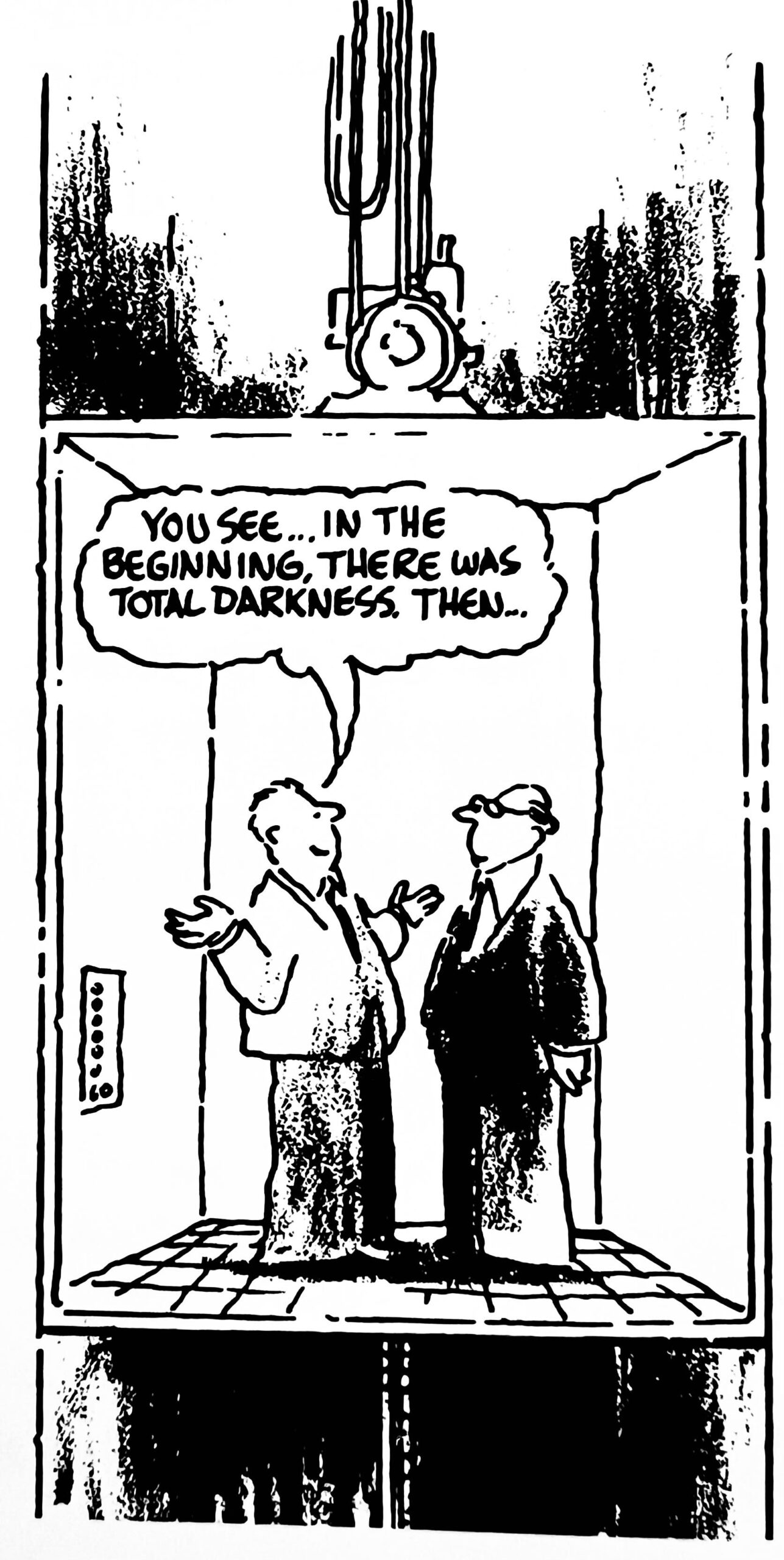Leadership Principle 3: Determine Your Credo
Is it clear what your organization stands for?
EVERY LEADER NEEDS A CREDO
These people need to easily and clearly understand where your firm stands relative to similar firms with which you compete. The listener needs to be able to position your company as a certain kind of company, offering a product or service with certain benefits.
Every day you will be talking to people inside and outside your organization for people with certain needs. Now that you have figured out your mutual values and mutual vision, creating a strategy (a plan) to get to where you want to go is a must. Obviously
The key part of the strategy to get to where you want to go is your answer to “Who are we, anyway?” stated in a crystal-clear sentence or phrase

This statement is your credo, your position It needs to clearly differentiate you from others selling similar products or services. It needs to be benefit-oriented, and it needs to address a particular target audience.
This credo is what you actually talk about. It is your external rallying cry.
It is what you’ll say every time you get up to speak.
It will be what your company’s capabilities presentation is based on
It’s you.
It’s what will give you sparkle when you speak.
It’s what your people must buy into, so that you can deliver it.
It’s what you believe.
It’s what everyone in your organization must believe.
Always
THE DIFFERENCE BETWEEN VISION AND POSITION
Leaders need to talk about where they’re headed. That’s your vision.
Leaders need to talk about what they stand for, what they deliver, who they are. That’s your position.
A vision is where you are going.
A position is who you are, your identity.
In the reality of business, position is more important than vision.
A credo is the short line that is the essence of the position. It’s what gets talked about to everybody, inside and outside your organization. Your credo will institutionalize your vision and make it a reality.
Your credo allows you to be remembered and differentiated.
Your vision is essentially an internal issue. The financial analysts want to know it, as does your banker, but mostly it’s used only inside, to give direction to activities and to let your people know the goal-where you are headed. You have to have it in order to create a mutual buy-in so that everyone knows where the team is heading and why it’s beneficial to get on the bus!
Your position is largely an external message. It allows your public to know what you do, what you stand for, what’s different about your product or service, what’s the benefit of your product or service, and who you want to do business with.
WE’RE THE BUSINESSMAN’S AIRLINE
I experienced a beautiful example of a crystal-clear position a few years ago when I was doing business in Oslo, Norway, and took a weekend ski trip to a resort six hours north of the city to see some of the beautiful countryside. Speaking to a young Norwegian couple on Saturday night, I asked the young woman, “Who do you work for?”
She responded, “SAS” (Scandinavian Airlines). “What do you do?” I asked.
“I’m a reservationist.”
Then I posed a very simple request: “Tell me about SAS.” “SAS? We’re the Businessman’s Airline,” she said confidently.
Somewhat startled by her crisp response, I listened as she added in an even more self-assured tone, “We want everyone to know that we’re the Businessman’s Airline.”
Now that’s a crystal-clear position.
Jan Carlzun, president of SAS, had a vision, “to become the best airline in the world for the frequent business traveler.”
In his book Moments of Truth, Carlzun states that in order to attain his vision, he and his people decided to position themselves as the Businessman’s Airline. This position gave Carlzun a credo by which to measure all decisions. He talked about it to all of his people internally-and, of course, his advertising and sales mes sages focused on why SAS was the Businessman’s Airline.
In fact, since that experience in Norway, when a young woman who was a reservationist for SAS clearly sounded off with the company credo (“We’re the Businessman’s Airline”), I’ve also checked with many other SAS employees when I fly their airline.
Would you believe it, everyone knows this. In fact, SAS employees get heated and excited when they tell me the benefits for a businessperson of flying SAS. They’re sold.
And they sold me. (By the way, it also helped move SAS from a company on the verge of losing $20 million in 1981 to one that just one year later was earning $54 million. By 1984, SAS was voted Air Transport World’s Airline of the Year.)
If your organization has a credo now, and you’re out talking about it with consistency, then your people will “test” as well as the SAS people. But if you don’t have a credo, a consistent message to talk about, your people don’t know what you stand for.
CONCENTRATION IS THE SECRET.
Positioning is essentially a marketing concept created to help companies differentiate their products in the consumer’s mind. For example, if you sell tires, how do your tires differ, to the customer’s benefit, from other companies’ tires?

This still is a vital rationale for positioning-to clearly differentiate.
However, I believe there is another equally valid rationale for positioning: the principle of concentration
Take the SAS position, “We’re the Businessman’s Airline.” This position allowed (or forced) all planning, capital investments, advertising, training, etc., to be measured against one concentrated target.
The target, “to become the world’s best airline for the frequent business traveler”-in other words, “to be the Businessman’s Airline”-provided a clear, concentrated focus so that SAS could (and did) attain its vision.
The business principle of concentration can be looked at like this.
The principle of concentration seems simple, yet it eludes many organizations. So many of us try to do a little bit of everything, try to please so many audiences-and never become great at anything. Management by committee fosters this type of thinking, an example of which is giving an equal amount of resources to each operating division. This seems “fair,” but it isn’t-because, by definition, not all divisions have the same opportunities to get a good return on invested capital.
When you see this type of equal distribution of resources, you know that the firm does not understand the principle of concentration.
The leader’s role is to clearly point out the direction of the organization, then position the organization so that there is a credo to live by.
Then everyone knows that’s what you stand for.
Therefore, that’s what your resources must be concentrated toward, so that you have a fighting chance to deliver against your credo
This sequence of activity will automatically create a strong identity for your organization.
THE THIRTY-SECOND ELEVATOR RIDE TEST.
The name of your company (not too tough). What you stand for /believe in (very tough). The benefits of your product/ service (tough).
Most people cannot answer these questions in thirty seconds.
This means the leadership has not addressed who your company is (your credo) and how that benefits your customers.
Every day, hundreds of opportunities present themselves to people at all levels in an organization.
Theoretically, people at every level should be able to state the company credo and explain how it is translated into benefits to the customers. You never know when you may be talking to a potential or current customer who needs a boost to the rationale for doing business with you.
Everyone needs to be able to talk about these core issues:

Who are we? How do we differentiate ourselves from companies delivering similar products or services? This is your credo, your position.
How does our credo benefit our customers?
A leader who constantly talks about the credo will discover that almost everyone can recite it. A leader who doesn’t is missing the mark, losing the chance to turn the entire company into a sales force with a basic selling message:
- The credo
- The benefits to the customer
Try this thirty-second test on your employees to discover how clear you’ve been in communicating your own credo. Even if you know you don’t have a clear credo, find out what your employees say … because they’ll say something.
It may be far off the mark, but it’s their perception of reality-and to them, that’s the truth.You have the right to expect everyone to know your credo and to be loyal to itonce you’ve done the work to make it laser-clear.
Your people will love the feeling they get when they can pass the thirty-second test. It will reinforce why they work for the organization. It will give them a boostplus, now they will be able to convincingly talk about who you are.
